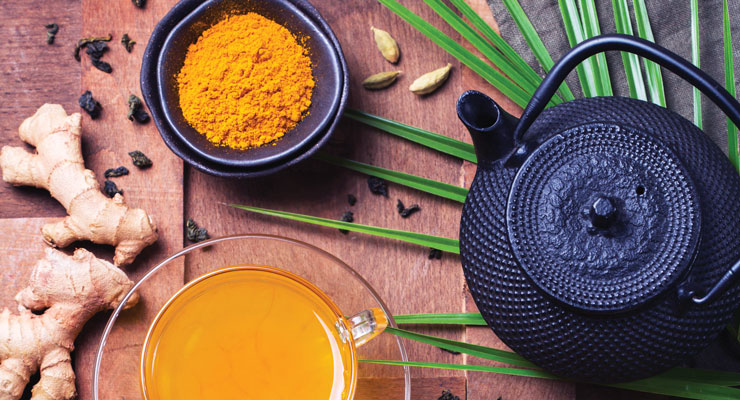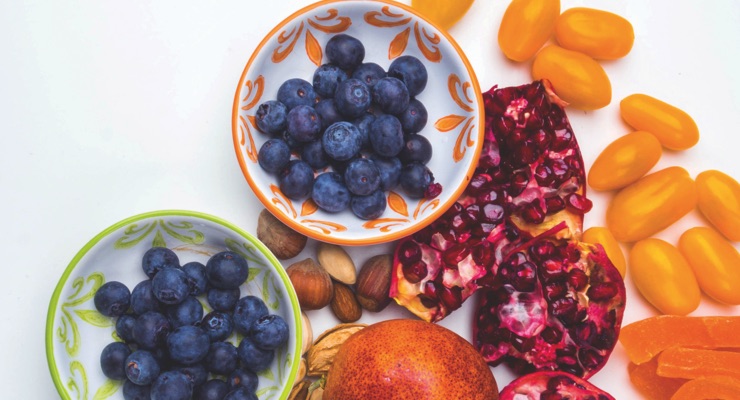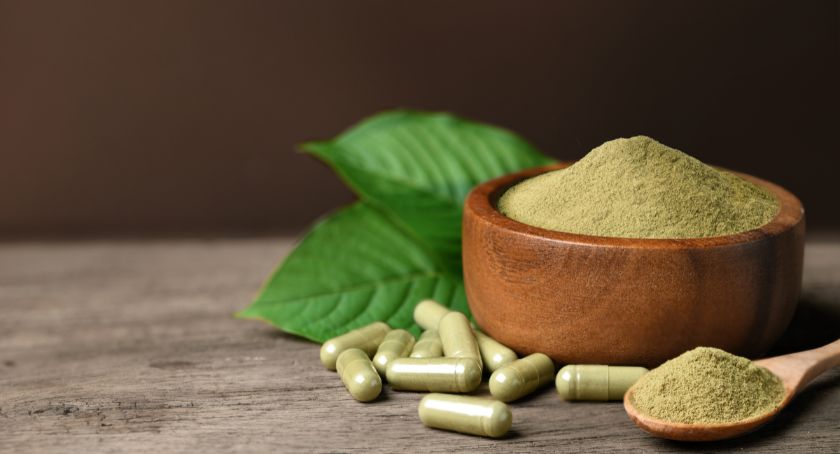Features
Antioxidants Adapt to New Growth Avenues
Brands have opportunities to reach consumers in search of general health and wellness protection, as well as those who opt for targeted solutions.

By: Sean Moloughney

While consumers may have an elementary understanding of antioxidants, and the selling opportunities based on this term alone may be limited, dietary ingredients with demonstrated antioxidant potential still resonate on a range of fronts, especially in the context of immune function, vision health, beauty and beyond.
In general, as many people prioritize their health, placing more attention on prevention during the COVID-19 pandemic, sales of functional nutrition ingredients have grown considerably over the past year.
According to SPINS data, for the 52-week period ending Jan. 24, 2021, U.S. sales in the Natural, Enhanced and Conventional Multi Outlet channels for dietary supplements marketed for immune health jumped 31.1% to about $199.1 million, excluding Whole Foods. Notable functional ingredient sales for the same period included: vitamin C (not Ester-C): +69.9% to $656.2 million; vitamin D: +49.5% to $649.9 million; melatonin: +45.3% to $629.9 million; elderberry: +113.2% to $331.5 million; vitamin C (Ester-C): +46% to $233.3 million; zinc: +143.1% to $83.6 million; vitamin E (not Ester-E): + 9.6% to about $74 million; vitamin A: +41% to $13.2 million; quercetin: +93.9% to $7.8 million; and glutathione: +35% to $1.9 million.
Other notable ingredient sales, according to SPINS, included probiotic supplements ($883.3 million, -1.4%); CoQ10/ubiquinol ($246.7 million, +0.6%); turmeric ($136.1 million, -3.5%); lutein ($107.1 million, +2.4%); green teas/supplements ($33.5 million, -7.2%); and astaxanthin ($2.4 million, -17.2%).
Understanding Oxidation & Stress
Free radicals are byproducts of the body’s normal metabolic processes, explained Deshanie Rai, PhD, FACN, vice president, global scientific and regulatory affairs, OmniActive Health Technologies. “They are unstable because they have an uneven number of electrons. This makes it easy for free radicals to react with other molecules (to form long chain chemical reactions)—a process known as oxidation. For this reason, free radicals are also called reactive oxygen species. Once again, oxidation is a normal and necessary process. However, if left unchecked, these free radicals can cause cellular damage at the structural and functional levels.”
The human body has mechanisms in place to stabilize or neutralize free radicals, called antioxidants, Rai continued. “There are endogenous antioxidants produced by the cells themselves, and the body also relies on exogenous antioxidants present mainly in our diets, such vitamin C, vitamin E, zinc, selenium, and carotenoids, including lutein and zeaxanthin isomers.”
Oxidative stress is an imbalance between the levels of free radicals produced by the body and the amount of antioxidants available to neutralize these free radicals, Rai said. Under situations of oxidative stress, free radicals damage the cell’s membranes, DNA, proteins, etc. “Collectively, these increase the body’s inflammatory response. Normal physiological and biochemical processes are subsequently compromised making one more vulnerable to disease conditions.”
Free radicals are “little marauders,” according to John Deaton, vice president of science & technology, Deerland Probiotics & Enzymes. “These electron-deficient atoms seek to steal electrons from others, making them highly unstable as they cruise the body in their electron quest. These erratic free radicals break down and impair other cells throughout the body.”
Generation of free radicals (reactive oxygen species and reactive nitrogen species) occurs during normal metabolism and are also used in the immune system to fight off infections, noted Greg Petersen, senior research scientist, Applied Food Sciences.
Oxidative stress is when the body’s normal means (endogenous) of dealing with these reactive species is overwhelmed, he added. “There is a point at which the body cannot keep up with the production of the reactive species. The reactive species have the capability of interacting with and damaging critical molecules like DNA, lipids, and proteins. Damage to these molecules can lead to a number of deleterious effects. These include mutations, carcinogenesis, altered protein functions, and damage to cell membranes, which can affect many functions.”

Stressors (external and internal; physical, mental and emotional) can cause reactive oxygen species to flourish and the body’s antioxidant cycle cannot keep up the same pace to wipe them out, explained Deaton. “The damage done by oxidative stress to the body’s cells, proteins and DNA manifests itself in a variety of ways, contributing to accelerated aging and risk factors for disease. The object is to stop free radicals from proliferating and disable their damaging activity.”
Even though free radicals can cause damage, they are important to the normal functioning of the body, noted Petersen. “They can serve as chemical messengers in the body, essentially telling the body that something is wrong or that something has changed. In the case of the immune system, they may be used to destroy the infection or invader.”
During exercise, the generation of reactive species is high since they are made in the normal production of ATP, said Petersen. They may also generate when muscles are damaged. “In this case, these reactive species can signal to the tissue and cells that they need to turn on the pathways that are important for repairing tissue damage and stimulate other processes that can help in the future generation of energy, like creating more mitochondria, etc.”
Alongside an imbalance between the production of ROS/RNS and antioxidant defenses of the body, oxidative stress can be defined as a disturbance of redox signaling and control, according to Anurag Pande, PhD, vice president, scientific & regulatory affairs, Sabinsa.
“Decades of studies on antioxidants has led to development of the theory that aging itself and its root causes lay in the oxidative stress that develops over time in the body. Today we understand that many chronic health conditions have their origin from oxidative stress, and so to manage these conditions it’s important to manage oxidative stress.”
This understanding has generated broad interest in nutritional antioxidant compounds, he continued. “Clinical and epidemiological studies have provided evidence on the role of antioxidants in managing health and the aging process. As our understanding of antioxidants increased over time, scientists have also looked toward nature to find dietary sources which have traditionally provided support for human health owing to their antioxidant activity. We hope that this exploration will continue and assays for analyzing the antioxidants will become more relevant to biological systems for better clinical understanding.”

Form & Function
Nutritional antioxidants have different mechanisms of action. According to Petersen, four main functions are to neutralize free radicals, repair oxidized membranes, decrease reactive oxygen species production, and—via lipid metabolism, short-chain free fatty acids and cholesteryl esters—neutralize reactive oxygen species (Simioni et al. 2018). “In general, nutritional antioxidants scavenge free radicals,” he added.
According to Rai, “A robust body of science both at the clinical and mechanistic level show that antioxidant nutrients such as vitamin C, vitamin E, selenium, and the carotenoids including lutein and zeaxanthin, are capable of neutralizing free radicals and limiting cell damage. For example, the lutein and zeaxanthin isomers (RR-zeaxanthin and RS (meso)-zeaxanthin), which are the only three carotenoids exclusively accumulated in the macula of our eyes, effectively limit oxidative damage as a result of blue light exposure.”
Other bioactives commonly consumed in the diet with well-established antioxidant activity, include curcumin from turmeric, as well as gingerols and shogaols from ginger, she added. “These dietary polyphenolic components have been shown to be effective in managing healthy levels of inflammation primarily because of their antioxidant activities,” she said.
Science indicates many health concerns boil down to basic bodily functions like inflammation, which can result in oxidative stress, said Franziska Weichmann, manager of scientific communications and product development at Horphag Research. “Our flagship antioxidant ingredient, Pycnogenol French maritime pine bark extract, is a unique source of polyphenol compounds that are shown to stimulate production of antioxidant enzymes inside cells, therefore protecting cells from free radical damage; and has been shown to help support basic body functions to reduce inflammation and oxidative stress while improving blood vessel health.”
Dietary antioxidants such as vitamin E, vitamin C, carotenoids and polyphenols play a major role in maintaining the homeostasis of the oxidative balance, according to Elzaphan Hotam, vice president of sales, NextFerm Technologies, which offers Astaferm astaxanthin derived from non-GMO yeast fermentation.
“Additionally, a reduced dietary antioxidant intake is associated with oxidative stress and inflammation. Therefore, nutritional antioxidants can decrease lipid and protein oxidation, potentially encouraging quicker recovery and protecting against deterioration to chronic inflammation and diseases.”
Astaxanthin is a safe, natural molecule with strong antioxidant and anti-inflammatory activity, he continued, displaying a variety of health-promoting properties and modulating diverse biological functions.
Lost in Translation
At a consumer level, most of the nuance around antioxidants gets lost, according to Hotam. “We believe that the general population understands antioxidants as molecules that fight free radicals that can cause harm to our body. In that context, consumers may find it important to consume antioxidants as part of their ‘multi’ intake, and especially when it comes to issues like healthy aging, sports recovery, healthy immune system, or beauty.”
However, consumers don’t fully recognize the differences between various antioxidants and their mechanisms of action, he continued. “Needless to say, the differences between types of carotenoids for example are even more obscure. Therefore, branded companies need to continue to educate regarding the different properties and uses of various antioxidants and carotenoids.”
Fundamentally, antioxidants are generally not well understood among consumers, according to Steve Fink, vice president of marketing at PLT Health Solutions. “Certainly less than condition-specific ingredients and formulations. They have a general idea that they are ‘good for them’ but beyond that there are a range of perceptions—not always well informed—about their value.”
Bob Capelli, CEO, BGG Americas & Algae Health Sciences, said antioxidants were hyped so much in the 1990s and 2000s that most consumers now understand they’re beneficial, “but I don’t think many consumers really understand how they work. And they also don’t understand that many antioxidants, under certain conditions, can become pro-oxidants and have a deleterious effect on our bodies by causing additional oxidation. Consumers have to be educated that, if they wisely decide to supplement with an antioxidant, they need to take one that has no pro-oxidant effects like natural astaxanthin.”
For a stretch of time, consumer media outlets discussed “oxidation,” and consumers learned about the value of antioxidants, Capelli said. “Then, it seemed like the media turned to ‘silent inflammation’ as the great ‘health evil,’ and put oxidation on a bit of a back burner. The truth is that both oxidation and silent inflammation can ravage our health and lead to serious maladies. Fortunately, there’s a great product that is clinically validated to control both—natural astaxanthin.”
Overall, especially amid the COVID-19 pandemic, consumers seem to be taking a more proactive approach to health and wellness, according to Weichmann. “We’re continuing to see increased consumer interest in antioxidant ingredients. We see that consumers know antioxidants are beneficial for their general health, but they lack the complete understanding of why. Many consumers are not aware of the science behind these ingredients or believe that many products on the market feature claims that seem too good to be true with a lack of scientific research to back them.”
As a company grounded in science, Horphag Research has dedicated years of research to learning about the science behind Pycnogenol to fully understand the extent of its benefits. “We take this as an opportunity to further educate consumers on the specific benefits of antioxidants,”said Weichmann.
Generally speaking, Petersen noted consumer understanding of many complex systems in the body is limited. “The general conclusion is that antioxidants are beneficial, and consumers appear to be actively seeking antioxidants in their diets. This is evident by the number of product launches in this space. Many consumers are connecting antioxidants to health benefits for aging, skin health, and evensports nutrition.”
The science can be equally complex, he added. “Science wants to ask/answer specific questions. For instance, if someone is into bodybuilding and desires muscle growth, excess intake of antioxidants may hinder that. If the reactive species serve as a signaling mechanism for the body to adapt to the training by increasing muscle mass, quickly quenching them may prevent that communication from occurring (Higgins et al. 2020). Therefore, bodybuilders might not get the results they were intending.”
But science also shows that oxidative stress can lead to damage in the human body, Petersen added. “Nutritional antioxidants can have beneficial effects, but more work needs to be done in this area of research. In particular, there needs to be a better understanding of the negative effects of antioxidant intake, if any.”
Science on antioxidants and causes of oxidative stress was groundbreaking for understanding the aging process, according to Pande at Sabinsa. “Since then compounds like resveratrol, vitamin C, CoQ10, selenium, and curcuminoids, among others, have gained popularity among consumers as a way to slow aging and support good health. Studies have found conclusive evidence that free radicals are involved in processes such as inflammation, a central piece of the puzzle related to most chronic health conditions. The body of science on free radicals and their impact on human health is growing, demonstrating more need for antioxidants and driving consumer demand.”
Vitamins and minerals commonly found in multivitamins, such as vitamin C, vitamin E, selenium, manganese, and carotenoids are some of the most familiar, according to Rai at OmniActive.
When it comes to “why” they work, it’s a matter of science and consumer awareness, she added. “Branded ingredients deliver product manufacturers added value which translates to meeting the demands of consumers. For instance, both our Lutemax 2020 lutein and zeaxanthin isomers and CurcuWIN highly bioavailable curcumin ingredients are clinically-studied for multiple health benefits and are both Non-GMO Project and USP verified—all unique selling points that help formulators differentiate their products on a crowded shelf.”
Muddying the waters for consumers, the ORAC (oxygen radical absorbance capacity) assay is an important case study. ORAC was initially employed as a tool to guide researchers as they ranked or selected different foods or ingredients for further study based on total antioxidant capacity, said Rai. “It was not intended to be a confirmation of the efficacy of that food or ingredient in the body as an antioxidant. Unfortunately, ORAC was misused or perhaps overused by the industry to denote the health benefits of ingredients and foods. Therefore, in 2012, the USDA closed its database of ORAC values to stop the use of ORAC values as a marketing tool.”
With that said, measuring the antioxidant activity of a food ingredient or botanical is still a useful measure of the potentially beneficial properties of that ingredient or active, she added. “The challenge is how does one measure antioxidant activity of an ingredient that is an accurate representation of what happens in vivo (i.e., in the body). Also, most antioxidant foods and botanicals found in nature are multifaceted and its antioxidant activity cannot be reliably measured by just one type of antioxidant assay. This is where appropriate animal models and clinical testing becomes important to substantiate the antioxidant potential of specific foods, ingredients or botanicals in a manner that is meaningful to the consumer.”
There are several tests beyond ORAC to measure antioxidant activity strength, noted Deaton, including TEAC (Trolox Antioxidant Capacity), TAP (Total Antioxidant Power), TRAP (Total Radical Trapping Antioxidant Parameter) and a few others.
“The challenge is assigning a standard of measurement that everyone uses,” he said. “Overall and in general, the research continues to validate the free radical link to accelerated aging across numerous systems and conditions—from vision/eye health to skin wrinkling, to cognitive function, and more. Researchers are focusing on specific naturally derived antioxidants for their roles in slowing specific aging processes.”
As an industry, Weichmann said, “we must focus on specific scientific studies to show antioxidant potential and benefits in human trials and not in a petri dish. If an antioxidant is not proven to provide antioxidant benefits in the body, that ORAC claim is completely useless and highly misleading.”
Trusted & Trending
Bryan See, senior business development manager, ExcelVite, noted that vitamin C, vitamin E (tocopherol and tocotrienol), and carotenoids are among the most recognized antioxidants. “Vitamin C is an important water-soluble antioxidant, whereas vitamin E is an important fat-soluble antioxidant; and there are eight forms of vitamin E in nature (alpha-, beta-, gamma- and delta-tocopherol and alpha-, beta-, gamma- and delta-tocotrienol).”
He emphasized that tocotrienols are markedly more potent than tocopherols. “Having said that, it’s important to take both tocopherols and tocotrienols as they have unique biological activities.”
The company’s flagship ingredient EVNol SupraBio is a patented and proprietary self-emulsifying full spectrum tocotrienol complex that ensures improved oral absorption of individual tocotrienols by up to 300% compared to a regular tocotrienol oil extract, according to See.
The company’s EVTene palm mixed carotene has a similar carotenoid composition to carrot, See added, (33% alpha-carotene, 65% beta-carotene, and 2% of other carotene (gamma-carotene, lycopene, etc.).
From an ingredient supplier perspective, Petersen at Applied Food Sciences said he tends to see trends one step before they may come to market, “because manufacturers are coming to us to develop the next line of products 1-2 years out. With that in mind, we see turmeric is still growing, showing residual interest from the curcumin boom a few years back. Today, the only difference is that we are more advanced in our technologies to help formulate these actives. Advancements in extraction processes and nanotechnologies have helped turmeric be more soluble, more bioavailable, and have less impact on sensory. This allows for a much broader range of products that turmeric can influence.”
Green coffee and chlorogenic acids are showing a “renaissance,” especially in beverages, according to Petersen. “The benefit of chlorogenic acids from green coffee beans is that they can be introduced into almost any delivery system with little impact on color and flavor. This is proving to be a popular source of antioxidants in sports drinks, waters, and other functional beverages.”
With so much demand for vitamin C, Applied Food Sciences has expanded its sourcing from amla, Indian gooseberry, to also include both conventional and organic acerola. “This antioxidant is quickly going into everything from stick pack powders and gummies to effervescent tablets and beverages. We have even seen cold brews fortifying their brands with naturally derived vitamin C. The value-add is that these ingredients are similar to other forms of ascorbic acid. Both amla and acerola can act as a natural pH modifier, bringing preservative/stability benefits to certain products.”
At Deerland Probiotics & Enzymes, Solarplast is a unique antioxidant with a documented mechanism of action. “Solarplast is comprised of isolated protoplasts extracted from organic spinach,” Deaton said. “It provides a robust blend of antioxidant enzymes and single antioxidant molecules that neutralize oxidants while also providing the components required to perpetuate the glutathione recycling mechanism, the body’s way of continuing the antioxidant process.”
An in vitro study exposed porcine liver to 500 mg of acetaminophen for 30 minutes, creating measurable free radical damage, Deaton said. This tissue was then exposed to several common antioxidant supplement ingredients—chlorella, acai, astaxanthin, and vitamin C to compare the rate at which they repaired the damage. “After 30 minutes, all test ingredients showed strong reparation activity, but after one hour, Solarplast far exceeded the others by continuing to repair at more than 60%. The second-best performer was 1,000 mg of acai, with more than 40% after 30 minutes and an hour.”
According to Deaton, Solarplast’s antioxidant strength is enabled by its proprietary manufacturing process, which allows the hardy spinach cell wall to be disassembled while preserving the protoplast’s lining (spheroplast) beneath it. “By keeping the spheroplasts pristine, the antioxidant benefits are fully preserved for bioavailability, and its ability to facilitate the glutathione pathway of antioxidant regeneration is strengthened.”
According to Weichmann, Pycnogenol has been shown to benefit circulation, joints, eyes, respiratory health and more, making it a smart choice for consumers looking for an ingredient that offers “all-around” benefits. “With more than 40 years of scientific research behind it, and more than 160 clinical trials and 450 scientific publications showing its benefits, this ingredient has the science to back its benefits.”
Recently, a pilot study published in the Panminerva Medica journal in 2020 found Pycnogenol may help to significantly decrease the frequency of migraines, reduce frustrating migraine symptoms, and diminish the disruption of daily activities caused by migraines.
One of PLT’s most popular antioxidant-related offerings is Hytolive Olive Fruit Polyphenol. According to Fink, “Hytolive is a 100% natural, patented ingredient that can deliver what scientists believe is the most important compound in olive oil for heart health—hydroxytyrosol—into formulations. Hytolive is a solvent-free natural extraction of olive polyphenols from the byproduct water of olive oil production. This clean-label ingredient is the subject of heart health claims in Europe (EFSA) and allows formulators to put the love affair with olive oil into their products. The claim approval was based on clinical studies showing protection of LDL cholesterol from oxidative damage (oxLDL).”
The primary active component of Hytolive, hydroxytyrosol, is a polar, phenolic phytochemical found in olive fruit, olive leaf, and olive oil as well as byproducts of olive processing, Fink noted. “Along with tyrosol and conjugates, it represents the main phenolic compounds in olive oil (50%). Hytolive Olive Fruit Polyphenol comes in a variety of product forms, making it easy to incorporate in existing processing environments. Low addition levels (100 mg 10% powder) mean low impact on organoleptic properties of food systems—with excellent stability in processing. It’s a clean label ingredient with good economics in food formulations.”
Among many antioxidants available in today’s market, one of the most distinguished products is turmeric, said Pande. “Turmeric’s bioactive compounds include curcumin (75%), demthoxy curcumin (15%) and bisdemethoxy curcumin (2-5%). Curcumin, the major component of turmeric, is a diarylheptanoid and a potent antioxidant. It is evident from the research that curcumin is able to stimulate the activities of antioxidant enzymes such as superoxide dismutase and glutathione peroxidase.”
Resveratrol, found in grapes, red wine, itadori tea (Japanese knotweed), peanuts and mulberries, has also been recognized for its antioxidant capabilities. “The polyphenolic ring of resveratrol can react and detoxify free radicals,” said Pande. As a trans stilbenoid polyphenol, it is also very stable, he added.
Amla (Indian gooseberry) has multiple beneficial properties, including its antioxidant activity. “Amla fruits are rich in polyphenols and ellagitannins. Beta-Glucogallin isolated from the aqueous fruit extract has been shown to have an ROS inhibitory effect,” Pande said.
Research Horizon
Over the last decade, the antioxidant field has seen a significant increase in research and publications, noted Weichmann. “Recently, we have seen health consciousness increase greatly during the pandemic. This has caused consumers to spend more time researching natural, evidence-based and safe products to meet their health needs.”
Consumer demand and education has helped drive and encourage more science to demonstrate the beneficial effects of antioxidants for various health concerns, she added. “We expect our scientific understanding to continue to grow. At Horphag Research, we are taking exciting steps to understand the core mechanisms of actions of our ingredients. This is a monumental step in understanding the cellular processes behind the breadth of benefits these antioxidants offer.”
With greater familiarity with adverse effects of oxidative stress comes better understanding of molecular pathways that are affected by reactive species, said Petersen at Applied Food Sciences. “This is important because for products, besides just knowing if it decreased the number of reactive species, we can better understand their true benefits by determining what pathways they impact. So, suppose a reactive species leads to an increase in atherosclerosis by increasing or decreasing pathways x, y, and z. In that case, one can get an idea of a product’s potential by measuring those pathways. Over time, we will learn what pathways to measure and how the body can absorb and deliver the antioxidant product to the desired tissue.”
Advances in scientific technologies including methods to reliably and accurately measure antioxidant activity have certainly propelled understanding of the relevance of antioxidants to human health and well-being, said Rai. “Antioxidants resonate with consumers—they understand them and are compelled to use them. This will continue to drive further research in this area both in terms of more clinical studies to strengthen the science on antioxidants for specific health benefits, as well as in terms of finding new and novel plant-based antioxidants.”
Sean Moloughney has been the Editor of Nutraceuticals World since 2012. He can be reached at SMoloughney@RodmanMedia.com.




















